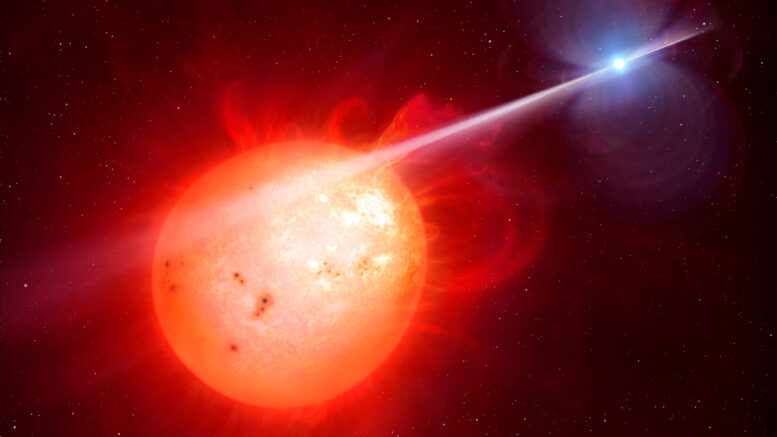It is thought that over 50 percent of all Sun-like stars are in binary pairs, and astronomers think that maybe most stars are actually binary stars. That said, let’s take a look at some of the brightest binary star systems in the sky. Many of these stars will be very familiar with astronomers. A few of stars should be familiar to astronomers as some of them are common stars in the Pacific Northwest.
Sirius
The brightest star in the night sky w a visual apparent magnitude of −1.46, Sirius is almost twice as bright as the next brightest star in the sky Canopus. The reason that Sirius appears so bright in the night sky is because of the intrinsic luminosity and close proximity to the solar system, plus Sirius is gradually moving closer to the Solar System. At 2x the size of the sun, Sirius is known colloquially as the “Dog Star”, which is reflected in its prominence the constellation that Sirius is a part of, Canis Major. Alongside with Procyon and Betelgeuse, Sirius forms one of the three vertices of the Winter Triangle to observers in the Northern Hemisphere. Sirius is visible from almost everywhere on Earth, except latitudes north of 73° N, and it does not rise very high when viewed from some northern cities. The best viewing opportunities are in the winter months after 10pm.
Alpha Centauri AB
Alpha Centauri A and B are Sun-like stars that form the binary star system Alpha Centauri AB, which appear to the naked eye to be a single star with an apparent magnitude of −0.27. Alpha Centauri AB is the brightest star in its constellation of Centaurus and overall the third-brightest in the night sky. For those living south of 29° South latitude, Alpha Centauri is circumpolar, which means that it never sets below the horizon; however, for those living north of roughly 29° N latitude, Alpha Centauri never rises.
Procyon
Located in the constellation Canis Major, Procyon is the 8th-brightest star in the night sky, with an apparent visual magnitude of 0.34. The star is one of Earth’s closest stellar neighbors, with the system lying a distance of 11.46 light-years away. The star is notable because the prime viewing period is during the Winter, when Procyon forms one of the 3 vertices of the Winter Triangle with the start Sirius and Betelgeuse. The best time to view Procyon is in late Winter, around the January 14th timeframe.
Achernar
Located in the constellation Eridanus, Achernar is the brightest star and is 9th-brightest overall star in the night sky. The components of this binary star are located 139 light years from the Sun with the star visible in the deep southern sky. This is because Achernar never rises above the horizon beyond 33°N, of latitude, which corresponds to the latitude of a city such as Dallas, Texas. For observers in the Southern Hemisphere, the star is best seen in November and is circumpolar above 33°S.
Antares
Located in the constellation of Scorpius, Antares is the brightest star in the constellation as it has an apparent visual magnitude that varies between 0.6 to 1.6. The star looks reddish when viewed with the naked eye and is roughly the 15th brightest stars in the night sky. The reddish look is the result of Antares being a red supergiant, which means that if placed at the center of the solar system, the star would reach some between the orbits of Mars and Jupiter. Viewing Antares is relatively stable as the star is visible all year long except for a 4-6 week period around November 30th in the mid-northern latitudes as a result with a conjunction with the sun. For those observers in the higher northern latitudes, Antares is only visible low in the south in summertime.
For more content like this, check out our other Top 5s. Make sure to connect with us on social media, such as Instagram for updates.

Be the first to comment on "Top 5 Brightest Binary Star Systems In The Sky"